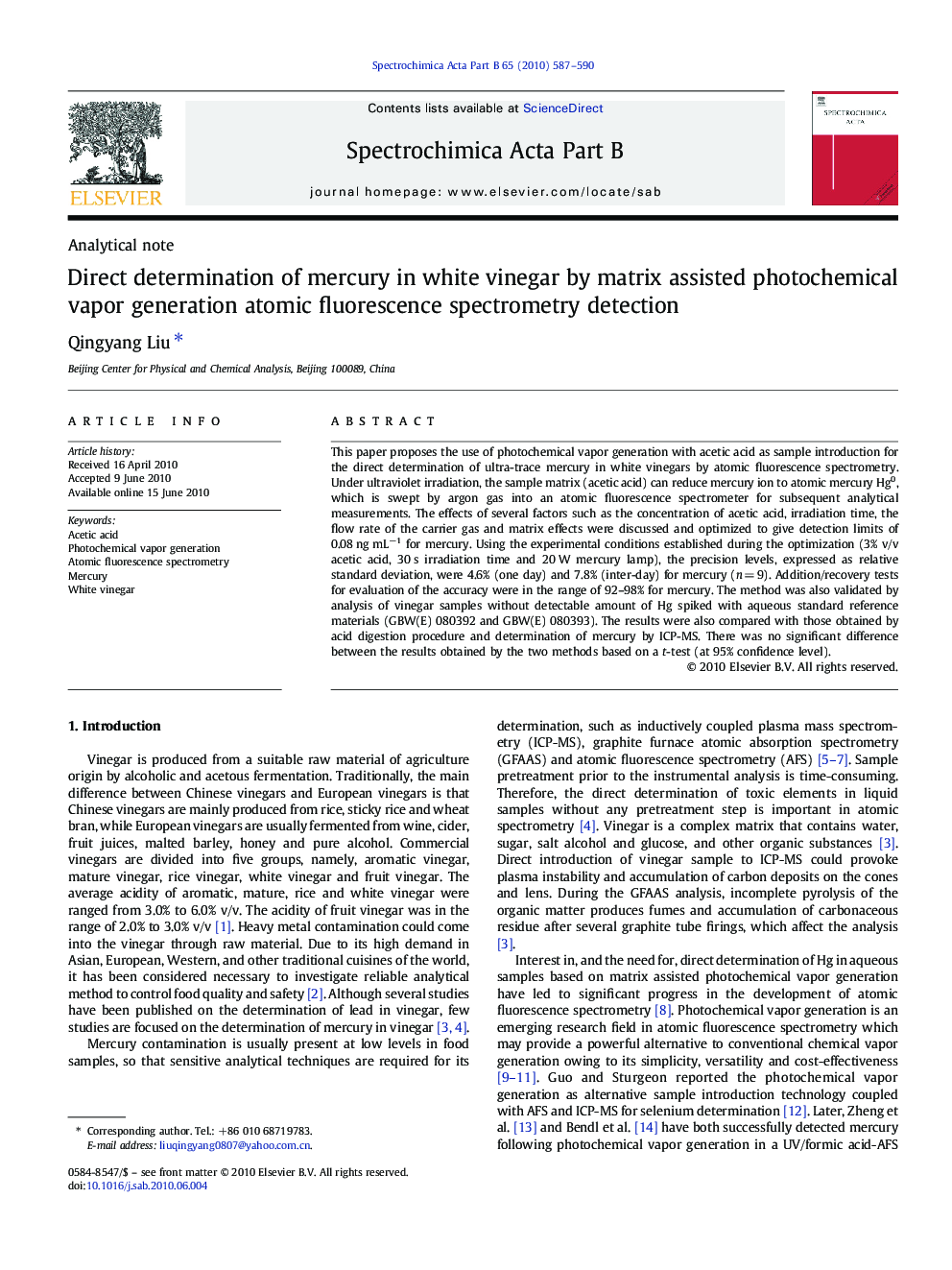| Article ID | Journal | Published Year | Pages | File Type |
|---|---|---|---|---|
| 1240435 | Spectrochimica Acta Part B: Atomic Spectroscopy | 2010 | 4 Pages |
This paper proposes the use of photochemical vapor generation with acetic acid as sample introduction for the direct determination of ultra-trace mercury in white vinegars by atomic fluorescence spectrometry. Under ultraviolet irradiation, the sample matrix (acetic acid) can reduce mercury ion to atomic mercury Hg0, which is swept by argon gas into an atomic fluorescence spectrometer for subsequent analytical measurements. The effects of several factors such as the concentration of acetic acid, irradiation time, the flow rate of the carrier gas and matrix effects were discussed and optimized to give detection limits of 0.08 ng mL−1 for mercury. Using the experimental conditions established during the optimization (3% v/v acetic acid, 30 s irradiation time and 20 W mercury lamp), the precision levels, expressed as relative standard deviation, were 4.6% (one day) and 7.8% (inter-day) for mercury (n = 9). Addition/recovery tests for evaluation of the accuracy were in the range of 92–98% for mercury. The method was also validated by analysis of vinegar samples without detectable amount of Hg spiked with aqueous standard reference materials (GBW(E) 080392 and GBW(E) 080393). The results were also compared with those obtained by acid digestion procedure and determination of mercury by ICP-MS. There was no significant difference between the results obtained by the two methods based on a t-test (at 95% confidence level).
